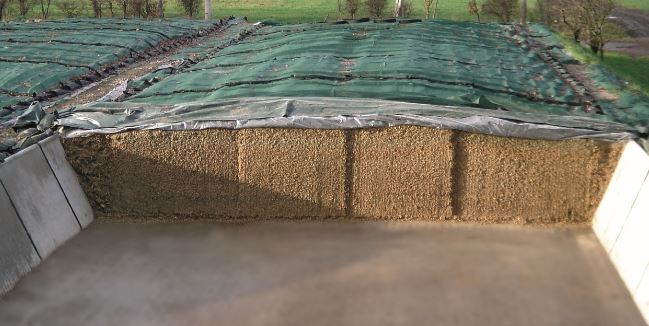Silage Analysis Update 2022
1 September 2022The nutritional value of silage is determined by several factors such as grass variety, cutting date, weather, wilting period etc. Therefore, silage should be analysed before going into the winter rationing season to allow accurate rationing and to get the most from forage. With high purchased feed costs, knowing the nutritional content of the silage allows for targeted feeding and supplementation where appropriate with concentrates.
The SRUC lab is starting to get silages arriving for analysis, the majority of these so far are 1st cut, pit dairy silages and the remainder beef and sheep 1st cut silages which are a mix of pit and bales. Figure 1 shows the average of all silages analysed and the range of results from minimum to maximum for each nutrient.
Figure 1:
| All Silages | Average | Minimum | Maximum |
|---|---|---|---|
| DM (%) | 31.2 | 14.9 | 57.7 |
| ME MJ/kg DM | 11.2 | 8.7 | 12.3 |
| CP g/kg DM | 129 | 86 | 188 |
| PAL (meq/kg DM) | 842 | 691 | 1172 |
| NDF g/kgDM | 455 | 357 | 557 |
| Sugar g/kgDM | 73 | 27 | 110 |
| SIP | 104 | 77 | 125 |
| pH | 4.2 | 3.5 | 4.7 |
The average energy content of silages analysed is good at 11.2 MJ of ME/kg DM, although quite a broad range from 8.7 – 12.3 MJ/kg DM. To put this into context if a 300k g steer was eating ad-lib silage of 8.7 ME they would receive 52 MJ per day of energy, compared to eating a 12.3 ME silage which would equate to 74 MJ per day. In terms of daily liveweight gain this equates to around 0.3kg/day on 8.7 ME silage and 1 kg/day on 12.3 ME silage! Not only a massive difference in animal performance, but also the potential to reduce concentrate costs on better quality silage. Hence why it is so important to utilise this information to accurately ration and target performance.
The protein results have a similar wide range, with a fairly good average of 129 g/kg DM. Those that have analysed below 100 g/kg DM will need to be careful, particularly if feeding alongside straw to suckler cows as this is likely to take them below a safe level of 90 g/kg DM and will result in a protein deficiency.
The average dry matter is perhaps not as high as expected with an average of 31.2%. Looking further into the data around 1/3 of silages analysed less than 25% DM. On investigation these low DM silages were from the South West regions and were cut around the end of May-early June which would explain their relatively low dry matter.
It is predicted that this average will increase as subsequent cuts are sent in for analysis, however, this shows the importance of having different cuts/stacks of bales analysed as year on year DM is always the biggest variable. If for example you have 20 bales weighing 600 kg at 25% DM, this is the equivalent of 150 kg of DM, enough to feed around 15 dry suckler cows. However, if the bales analyse at 35% DM, this is the equivalent of 210 kg of DM, enough to feed 21 dry suckler cows. Highlighting the importance of knowing the DM both for rationing and for feed budgeting.
Mary Young, mary.young@sac.co.uk
Sign up to the FAS newsletter
Receive updates on news, events and publications from Scotland’s Farm Advisory Service

